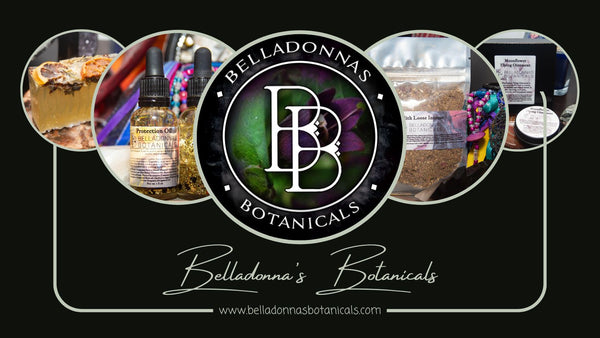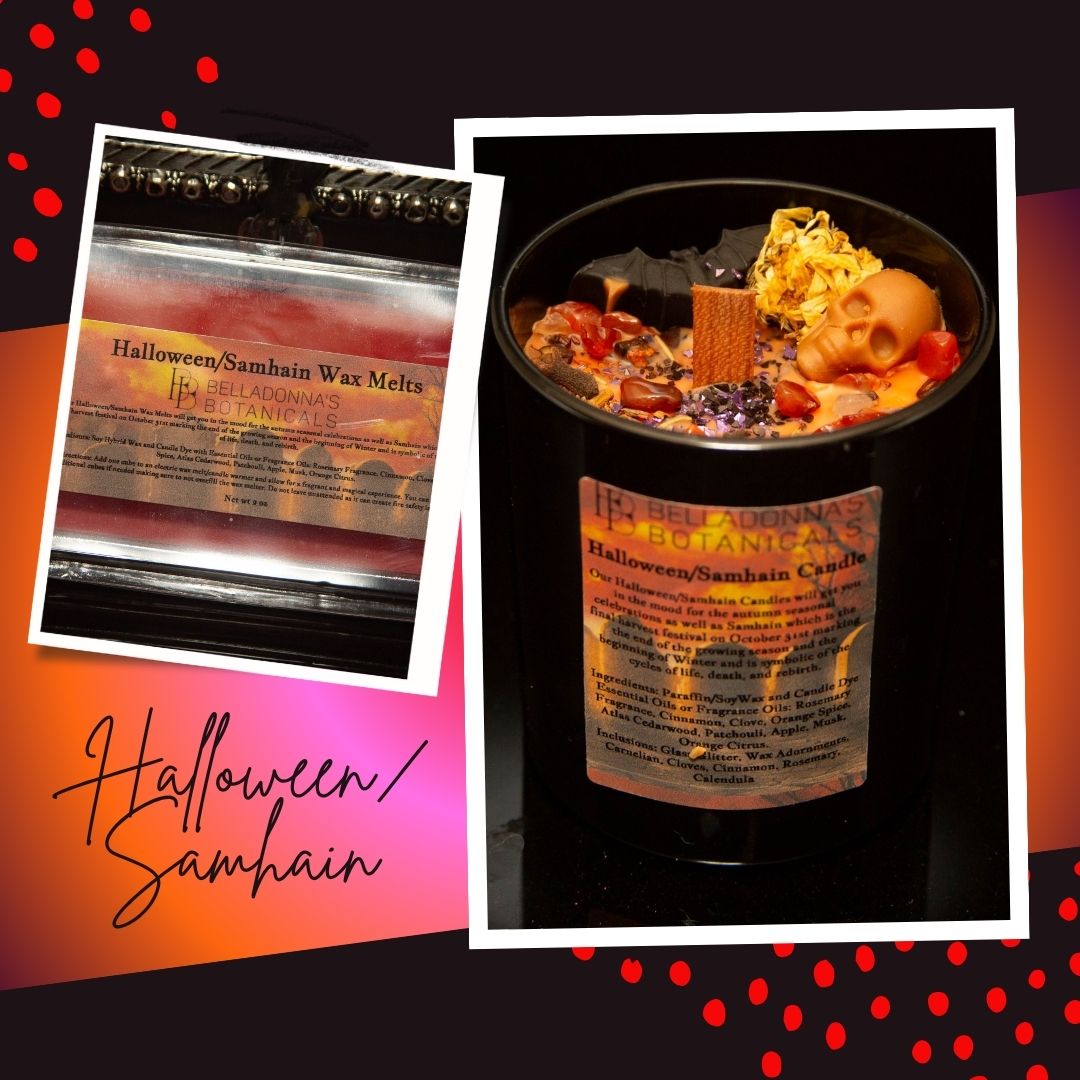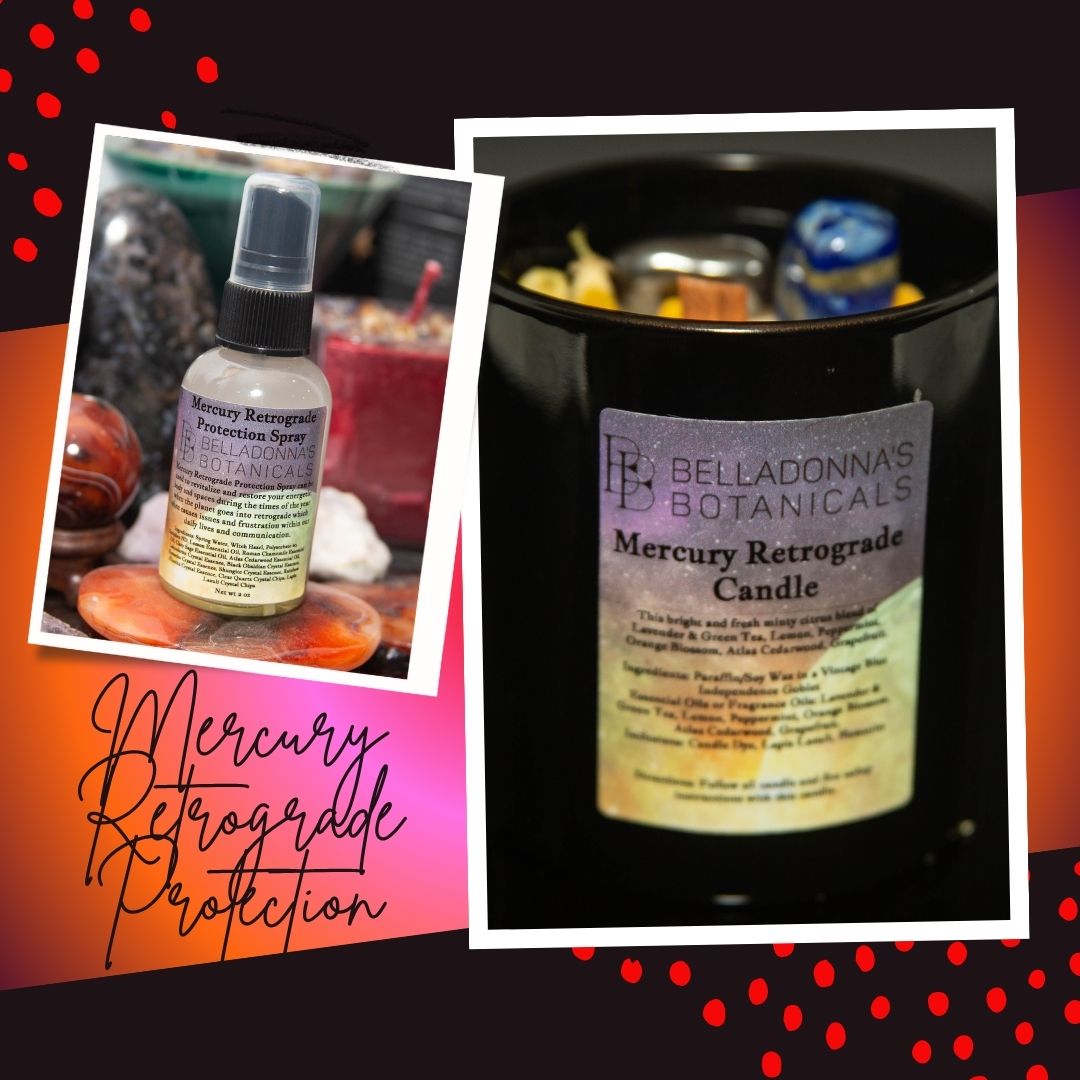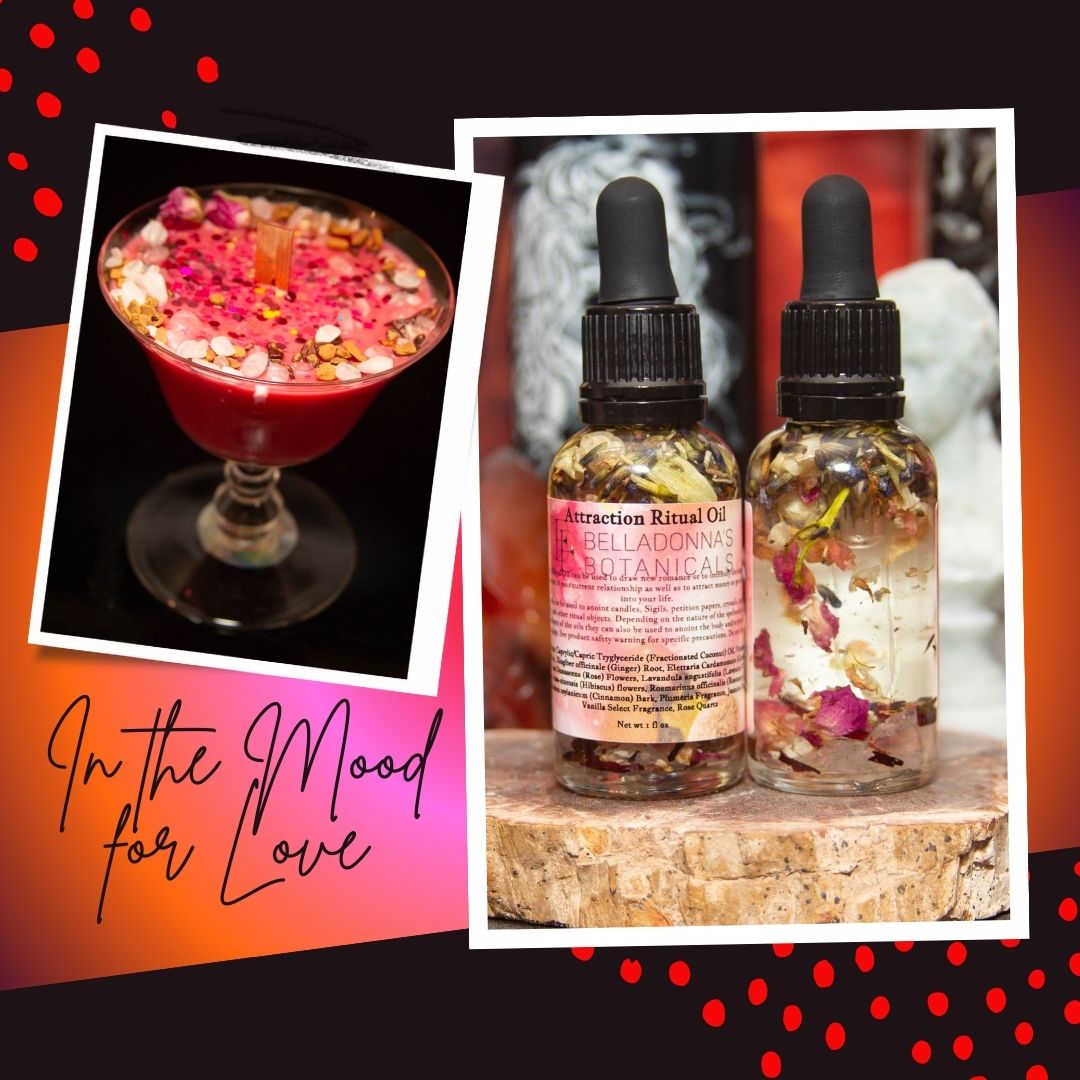Flying Ointments & Entheogenic Herbs
Historically speaking, in the European Witchcraft tradition, flying ointments were made of hallucinogenic and often toxic herbs such as Belladonna, Aconite, Mandrake Root, Hemlock, Datura, Opium Poppy, and Henbane. These herbs were either infused in an oil base, strained, or added to lard. The witches then applied these ointments on their bodies for a hallucinogenic “flying” experience. The herbs used contain psychoactive chemical constituents including aconitum, atropine, hyoscyamine, or scopolamine. The lore around flying ointments also surround witches using them to fly to sabbaths, casting spells, shape-shifting, and for sexual pleasure.
Entheogens are psychoactive substances found in plants, animals, fungi, and chemicals. Entheogenic plants, fungi, and chemicals include: DMT, Fly Agaric Mushrooms, Ayahuasca, Cannabis, Henbane, Iboga, Datura, Psilocybin, and many other toxic plants. Typically, entheogens are used within the framework of spiritual development as they alter and expand the limits of consciousness and perception sometimes with hallucinogenic effects. Entheogens have been used by Indigenous people for thousands of years for spiritual purposes. Such as the case with Ayahuasca which is a botanical brew made with different entheogenic plants and is used by the Indigenous people of the Amazon region for spiritual purposes. It is important to note that the use of entheogens is sacred to many indigenous cultures and were a part of their spiritual practices. Using entheogens for spiritual exploration has become more mainstream since the 1950s with the use of LSD, psychoactive mushrooms, and other hallucinogenic substances. There are legal restrictions when it comes to entheogens such as the plants used in Ayahuasca, certain mushrooms, and of course drugs like LSD and ecstasy. However, other entheogenic plants are legal to grow, own, and use such as Belladonna, Datura, Henbane, and Mandrake Root.
The term entheogenic herbs is often used alongside ethnobotanical herbs and many of those listed above fall into both categories. Ethnobotany is just the scientific study of regional plants and their relationship and use by the inhabitants of the region for purposes of medicinal preparations, spiritual use, and culinary use. Many of our modern medicines are derived from plants. Atropine is inherent in Belladonna (Atropa belladonna) and is used during surgical procedures and is used as an antidote to certain types of poisoning. Foxglove (Digitalis purpurea) which is highly toxic to most people gives us the cardiac drug Digoxin that is used to treat atrial fibrillation and heart failure.
Flying Ointments have become popular as the return to witchcraft and pagan practices has grown in popularity in addition to the use of natural herbs, essential oils, and other plant-based materials, which have always been a staple in the witches practice. Flying ointments are typically categorized as “toxic” which contain ingredients like Belladonna, Mandrake Root, Datura, and Henbane and “non-toxic” ones which use Wormwood and Mugwort as their base herbs. It is important to note that the topical use of toxic herbs is much safer than ingesting them, which can often be fatal. Even though they are safer to use topically, the person preparing them, whether that be you as an individual or someone who makes and sells them needs to be keenly aware of using the correct amounts of the toxic herbs when they do the oil infusion as well as the genus and species they are using. There are several different types of Datura’s, but typically Datura innoxia is used in modern flying ointments though I have seen some Flower Essences that use Datura stramonium.
Botanical specification is extremely important to be aware of and I say that as an experienced aromatherapist and herbalist. Let’s talk about Mandrake Root, about 99% of the “Mandrake Root '' on the market is actually completely unrelated to Mandrake Root (Mandragora officinarum) which usually runs about $25.00 per ounce. The cheap American Mandrake Root (Podophyllum peltatum) does not have any of the entheogenic qualities of European Mandrake root is they are not even in the same botanical family or even genus. American Mandrake root aka Mayapple is much more toxic than European Mandrake Root. It can be used in witchcraft for protection spells, but it should not be used in flying ointments.
Flying ointments can be used in witchcraft practices for astral travel, lucid dreaming, spirit communication, divination, as aphrodisiacs, and for sex magick. They can also be used medicinally to treat chronic pain and inflammation, for mood elevation, and sleep issues. The Poison Path is an area of occult herbalism that focuses on using poisons as medicine and using entheogenic flying ointments for spiritual development. It combines different elements of witchcraft and spiritual practices into its own offshoot practice.
Astral travel, which is also called soul flight, astral projection, lucid dreaming, or out of the body experiences is the most common use for flying ointments. Astral travel is a form of deep meditation in which the brain waves slow down from the conscious waking state (Gamma and Beta waves) to the in between waking and sleep states (Alpha and Theta waves), which Delta waves are mostly associated with deep sleep. Here is a link to some more information on brain waves: https://brainworksneurotherapy.com/what-are-brainwaves There are numerous ways to invoke astral travel with or without flying ointments. I use guided astral travel induction meditations or astral travel music that keys into the lower brainwaves. You can find hundreds of videos on YouTube that vary in length from 30 minutes to 8 hours. Basically, you want to be in a half asleep state, but still have the mind active to explore your inner psyche or travel to astral realms.
Most of the herbs used in flying ointments are from the Solanaceae botanical family, more commonly known as the Nightshade family and the non-toxic varieties (Mugwort and Wormwood) are from the Asteraceae botanical family. Once you have made or purchased a flying ointment, there are specific actions of each herb, safety precautions, and effects. I will preface this by saying that I have not experienced hallucinations akin to those that would occur with LSD, mushrooms, or other hallucinogens. I’ve experienced minor shifts in perception. For example, Belladonna makes everything a little brighter and colors seem more intense and I just feel mellow and happy. I also love to write about my experiences and the things that come up for me when I use flying ointments.
How do you use a flying ointment? First, you will always want to perform a skin test if you have not previously used the particular ointment. This is done by using a pea sized amount of the ointment which you will rub onto the wrists. Usually, it takes about 30 minutes to start feeling the effects. At which point, you can reapply the ointment as comfortable. The effects can last between 4-6 hours. If any adverse reaction or skin irritation occurs, you should immediately wash the area with cold water and soap. Flying ointments are safe to use with alcohol, cannabis, and SSRI antidepressants, but they may increase drowsiness.
Belladonna (Atropa belladonna) is a mild aphrodisiac, and is used for divination and prophecy. Medicinally, it can provide relief from pain and inflammation, elevate moods, and help with occasional sleep issues. Datura (Datura innoxia) is used for astral travel, spirit communication, and to induce psychic dreams. Medicinally, it has sedative properties, and can provide relief from pain and inflammation. Mandrake Root (Mandragora officinarum) is an aphrodisiac, and is also used for divination, protection, love magic, and is said to intensify magick, psychic abilities, and creative pursuits. Henbane (Hyoscyamus niger) is used for astral travel and to communicate with the dead and other spirits. Mugwort (Artemisia vulgaris) and Wormwood (Artemisia absinthium) are both non-toxic and used for lucid dreaming, working with familiars, and astral travel. Medicinally, they can relieve tense muscles, pain, and inflammation.Belladonna, Datura, Henbane, and Mandrake Root all have tropane alkaloids: atropine, hyoscyamine, or scopolamine. These are the chemicals that produce their psychoactive, sedative, and pain relieving effects.
General Safety Precautions for Nightshades including Belladonna, Datura, Mandrake Root, and Henbane
-
Do not ingest or apply to any mucous membranes.
-
Do not use if pregnant, nursing, or trying to get pregnant.
-
Do not use a week prior to or after surgery to avoid overdosing on anticholinergics.
-
Do not use it while driving or operating machinery.
-
Do not use if you have glaucoma, epilepsy, seizures, heart, liver, or kidney issues. Datura should not be used if you have an enlarged prostate.
-
Do not use it if you are elderly and immunocompromised.
-
Do not use if allergic to nightshades, aspirin (salicylate), or ragweed.
-
Do not use if you are taking anticholinergic medications, sedatives, anxiolytics, antipsychotics, or glaucoma medications. Ask your doctor if you are not sure.
-
Keep away from children and pets.
-
Side effects can include: Dry mouth, dilated pupils, blurry vision, light sensitivity, and rapid heart rate. Adverse side effects can include the loss of coordination, heart palpitations, difficulty swallowing, excessive thirst, dry fever, dizziness, restlessness, vomiting, and delirium. Seek medical attention if necessary for any adverse side effects.
General Safety Precautions for Wormwood and Mugwort
-
Do not ingest or use internally or apply to mucous membranes
-
Do not use if pregnant, nursing, or trying to get pregnant.
-
Do not use it while driving or operating machinery.
-
Do not use if you have glaucoma, epilepsy, seizures, heart, liver, or kidney issues
-
Do not use it if you are elderly and immunocompromised.
-
Do not use it if you are allergic to ragweed and other plants in the Asteraceae botanical family.
-
Do not use it if you take medication for epilepsy/seizures. Ask your doctor if you are not sure.
-
Keep away from children and pets.
-
Side Effects can include: Restlessness, changes in heart rate, difficulty sleeping, vivid dreams, and nightmares.
All that may sound scary, but if you use common sense, adhere to herbal safety standards when preparing, buying flying ointments from a trusted source, and using them, there really is nothing to fear. I’ll admit that I was a little apprehensive when I first started making my own flying ointments, but found that was mostly my self-doubt and some of the hysteria surrounding using poisonous plants. I have purchased several other flying ointments last year so I had some basis for what to expect once I started making my own blends. I find the experience to be quite lovely and mind expanding in ways that I never expected.
References and Resources



